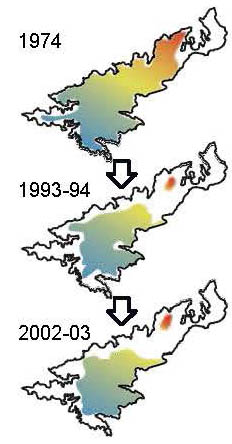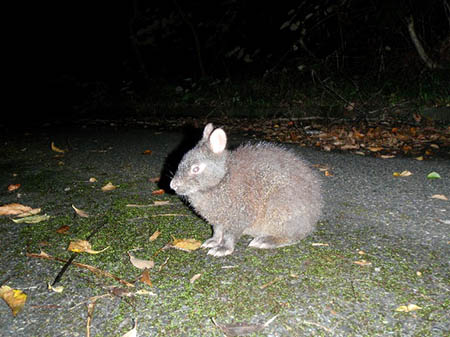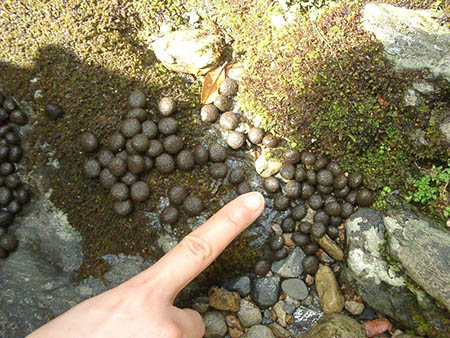Home > Research > Research Results > Research Results 2017 > Genetic diversity of Amami rabbits and prospects for population recovery following decimation by mongooses
Update:October 26, 2017
Main content starts here.
Genetic diversity of Amami rabbits and prospects for population recovery following decimation by mongooses
| Article title |
The influence of invasive mongoose on the genetic structure of the endangered Amami rabbit populations |
|---|---|
| Author (affiliation) |
Naoki Ohnishi (a), Soh Kobayashi (b), Junco Nagata (c), Fumio Yamada (c) (a) Tohoku Research Center, FFPRI, Morioka, Iwate, Japan. |
| Publication Journal |
Ecological Research, 32(5): 735-741, September 2017, DOI: 10.1007/s11284-017-1489-5( External link ) |
| Content introduction |
Amami rabbits, a species designated as a “special natural resource” in Japan, could formerly be found throughout Amami Oshima Island. However, since mongooses were released onto the island in 1979 to exterminate venomous snakes (Protobothrops flavoviridis), many rabbits have fallen prey to these newly introduced predators that have rapidly expanded in the habitat, resulting in a decreased rabbit population. Today, the population of Amami rabbits is divided into two groups: a small group that inhabits the north of the island and a relatively large group that occupies the southern region. This study analyzed the genetic structures of Amami rabbits in this divided population by extracting DNA from fecal samples collected at various locations on the island. Through this analysis, we discovered that the farther apart two locations are geographically, the more widely the genetic structures of the rabbits in those locations differ. It was determined that the northern and southern groups already possessed different genetic traits even before the population was separated. Thus, it is likely that the local extinction of a group of Amami rabbits that used to inhabit the central part of the island led to the disappearance of the genetic structure peculiar to this particular group. From the perspective of genetic diversity, the isolated northern group was less diverse than its southern counterpart. This may signify that between the two groups now separated by mongooses, the decline in population was more precipitous in the northern group than it was in the southern population. In 2000, the Ministry of the Environment started culling mongooses on the island. Thanks to this initiative, the mongoose population has decreased, whereas the population and distribution of Amami rabbits have been increasing. In recent years, there have been reports of rabbit sightings in the island’s central region, where the rabbits were once presumed to be extinct. Therefore, there remains some hope that the worst-case scenario, namely, the complete and irreversible loss of the genetic characteristics barely preserved in the small northern group, can still be avoided. The Ministry of the Environment aims to completely eradicate mongooses on the island by the year 2022. If this goal is achieved, the two groups of rabbits would be expected to resume their interaction with each other, hopefully restoring genetic diversity in the isolated northern group.
Figure. Changes in the distribution of Amami rabbits and a schematic diagram of their genetic structure. In the 1970s, Amami rabbits used to inhabit the colored areas throughout Amami Oshima, and their genetic structures were continuously changing. The colors in the figure represent these ongoing changes in genetic structure. Although the northern and southern groups were not geographically separated in the 1970s, their genetic structures already differed (as represented by the different colors). When mongooses expanded their habitat during the 1980s, local extinction of Amami rabbits occurred in the central part of the island, resulting in the loss of the genetic structure peculiar to that area (represented in orange).
Photo1. Amami rabbit.
Photo2. Feces of an Amami rabbit. |
Copyright © Forest Research and Management Organization. All rights reserved.



